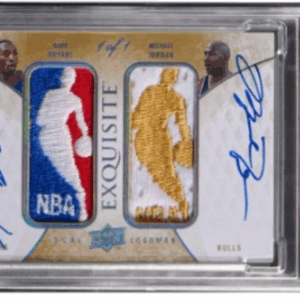In a vibrant and joyful world where baseball meets art, the 2025 Topps Baseball Series seems to have unlocked the key to collector euphoria by resurrecting and reimagining a classic: the Big Head Variation cards. These delightful caricatures that playfully exaggerate the proportions of your beloved baseball superstars have enraptured aficionados, inciting a good-natured storm in the realm of sports memorabilia.
The grandeur begins with a stellar lineup: Shohei Ohtani, Aaron Judge, Elly De La Cruz, Bobby Witt Jr., fresh rookies Dylan Crews and James Wood, anchored by seasoned heavyweight Mike Trout. Each of these athletes has been immortalized with loving irreverence, rendered in a style that places their celestial craniums at the forefront of admiration.
A sumptuous feast for the eyes and the focal point of collector craze, these cards are not just comical caricatures; they herald serious business in the secondary market. The initial buzz echoed through trading communities like a cannonball, with records being etched into the annals of card dealing history. The narrative tells of thousands of dollars changing hands as these tangible pieces of baseball mythology continue to enchant.
Among the most sought-after pieces, a Mike Trout Big Head variation, beguilingly designed and numbered to just 50 copies, breached the almost mythical $1,000 threshold. This monumental transaction, documented with the gravitas it deserves, reflects not only the value attributed to scarcity but also the fervor that seems to craft a cult out of collectors whenever Topps unveils something left-of-center.
Shohei Ohtani, that titan of the diamond who is as skilled with a bat as he is with a brushstroke on these cards, has become the modern-day Midas. His name alone on one of these peculiar creations catapults interest and commands enviable sums. Holding five of the top ten sales from this collection gives testimony to his magnetic prowess, with a solitary card of his prodigious likeness fetching $950—a figure as impressive as Ohtani’s on-field performances.
Aaron Judge, another colossus who strides alongside Ohtani, continues to mint his legend both within the fenestrated walls of a baseball stadium and amongst the rows of collector’s binders worldwide. His Big Head card, which exchanged hands for $609 on a fine March morning, speaks volumes of Judge’s perennial popularity and the draw of these head-turning oddities.
Among these major league stalwarts, the rookies like Paul Skenes carve their names into the card trading pantheon. His All-Star Rookie Cup Big Head card didn’t merely settle for attention; it demanded it, sparking bidding wars that hurled prices upwards from $525 to $808 practically overnight.
The narrative’s crescendo finds itself in the scarcest of treasures: a Bobby Witt Jr. card, of which only five dare roam amidst collectors. This superb rarity, spirited across auction platforms for $800, exemplifies the old adage of demand outpacing supply, a cardinal principle of both economics and obsession.
Even more compelling than the individual sales is the sheer quantity of engagement—51 robust trades were clocked within the initial week of release alone. An ecosystem in microcosm, where values fluctuated like tides, from a not-so-intimidating $45 for Dylan Crews’ offering to that majestic $1,000 precipice that Mike Trout bravely scaled.
This genre of playful, larger-than-life representations has undeniably struck a chord with both seasoned collectors and fresh enthusiasts alike. It unites both the meticulous archivist and the casual admirer, each as part of a vast throng drawn together by the allure of something delightfully novel, yet comfortingly traditional.
In the end, the Big Head cards are not merely pictures of players; they are commemorations of talent, wit, and whimsy melded into color-laden cardboard. In a world characterized by transitory fads and passing fancies, the 2025 Topps Big Head Variations seem poised to blend nostalgia with novelty, ensuring they hold stature as artifacts of the zeitgeist, proudly occupying both mantle and memory in turn.






